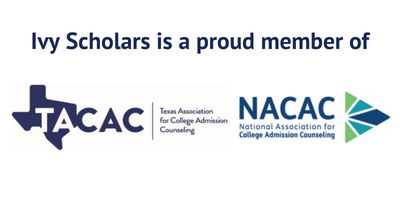Among the hardest parts of the medical school application process is the wait. This isn’t to say the rest of the application is easy; acing the MCAT or writing a perfect personal statement is quite difficult. But this is an active challenge, one where you have control over your destiny. Waiting for results, on the other hand, leaves you with nothing to do but reside with your thoughts.
One thing you can do during this wait is send letters to admissions officers, but what these letters are, when you should send them, and what they should contain varies. In this article, we’re going to examine letters of intent, letters of interest, and update letters, and explain how you should use each. Let’s get started!
Letters of Interest vs Letters of Intent
The fact that both of these abbreviates as LOI adds to the confusion for students, but these are very different letters, and should be used in different circumstances. Both can and should act as update letters, letting admissions officers know what you’ve been up to since you originally submitted your application.
Letters of Intent
A letter of intent is, as the name implies, a letter you send to a medical school to indicate that you will attend there if you are admitted, and to clearly state that they are your first choice school. While these letters are not legally binding, we still suggest you only send a letter of intent to only one school. Telling more than one that you will attend if admitted leads to an awkward situation if both admit you. This is generally considered bad form.
You should send a letter of intent after you are interviewed, but before you hear back (if it’s been a month or more), or after you are placed on a waitlist. This letter should express the following clearly:
- That this is your first choice school, and that you will attend if admitted. Medical schools care about yield, and they enjoy clear signals such as this.
- Any updates to your extracurriculars since you last contacted them. You should only include substantial updates, such as if you published or presented research.
- An expression of thanks for considering your application. This shouldn’t be effusive, but should clearly express your appreciation.
- You should express all of this in around a single page; more words does not a better letter make.
Remember that not all schools accept letters of intent; make sure any schools you contact do before sending one. Schools have different means of accepting these letters as well; via email or their web portals, and only certain file types accepted. Make sure you meet all of their requirements when sending your letter.
If a school explicitly says they don’t accept letters of intent, don’t just send one anyway. If their policy is unclear however, due to vague phrasing on their site, call the admissions office and check. The worst they can say is no.
Are Letters of Intent Legally Binding?
As we mentioned above, letters of intent are not legally binding; and technically you are free to send one to multiple schools. That said, ethics is a major part of being a doctor, and while sending letters to multiple schools is not illegal, it is ethically dubious at best. Send a letter of intent to only one school; send letters of interest to the rest.
Letters of Interest
A letter of interest is, as it sounds like, a letter you send to medical schools to express your continued interest in attending if you are accepted. You can send these to any medical schools you are interested in; unlike letters of intent, there is nothing wrong with sending these letters to many schools. We do caution that these letters should only go to schools you would attend if admitted, but if you built your list well, then that will be true of every school you applied to.
Generally, you should send a letter of interest after you’ve had your interview; whether you’ve been placed on the waitlist or not. Schools like to know you’re still interested, and while these aren’t quite as much of a commitment as a letter of intent, admissions officers will still make note of them.
These letters should generally contain the following:
- A clear statement of your interest in the medical school. This should ideally be backed up with a brief discussion of why, and how their program fits your interests.
- Any substantial updates on activities you are involved with. You don’t need to include minutia, only things which are notable.
- An expression of thanks for their time and consideration of your application. This is just good manners to include.
- These letters should be around a page long; any longer and you want to look at what you’re including, and whether it’s really necessary or relevant.
Not all schools accept letters of continued interest; check before sending them whether a medical school will accept them, and if so, how you should submit it. While you can use the same general outline for the letters you send to each school, these should be personalized. Just as with your essays, you can reuse most of the work, but change the details to be specific to individual schools and programs.
How Much Do These Letters Matter?
This is a topic which is hotly debated by students, mostly due to the opacity of medical school admissions. There are persistent rumors that these letters do nothing, and are discarded unread, or the reverse, that these letters can and do provide a significant boost to your application chances.
Sadly, it is impossible to do a proper double-blind study on the effects of letters of interest and intent on your chances of medical school acceptance. From experience though, it seems that while sending these letters may not always help, not sending them can be a detriment.
Medical schools care about their yield, and want to admit students who are eager to attend. The clearest way to signal your continued interest is by sending one of these letters; not doing so may lead medical schools to question whether you’ve lost interest, and to consider other candidates.
This does not mean you should send letters endlessly; generally one letter is enough. Some students are tempted to send further letters to their top choice schools, but this is rarely worth the effort. Generally, these will serve no purpose.
In some limited cases, you will have extracurricular accomplishments significant enough to justify sending further letters to schools. While there are exceptions, generally the following qualify for this:
- Academic updates where you have majorly improved your GPA, or fulfilled prerequisites for entering that medical school.
- Research updates, such as publications or presentations. Acceptance to publish or present counts as well; since these are long processes they may not be fully resolved in time for an update otherwise.
- If you are promoted in a job which is related to healthcare, giving you more experience in the field.
- Other significant updates; getting awarded a major scholarship or other accolade, for example.
Beginning a new activity, such as a research project or clinical job is generally not worth an update on its own. These can be included alongside the more major ones listed above, of course. The exception is if you were lacking in one of these areas when you initially applied; see our article on activities for medical school to see how these institutions want to see you spending your time.
Your first letter of interest or intent can be sent without major updates, but secondary letters should not be sent without something significant to share.
Final Thoughts
Medical school applications are a long and involved process, and the work sadly isn’t over when you hit submit. That said, we do find that doing something is infinitely better than the wait to hear back. In either case, we hope that this article has given you a solid introduction to letters of interest and intent, and let you know how you can best compose and use both in your medical school applications.
Of course, composing the perfect letter can be difficult, as can knowing what to include. Each situation is different after all, with its own quirks and concerns. If you want to discuss your own letters with us, or any other aspect of the medical school admissions process, schedule a free consultation today. We’re always happy to hear from you.








